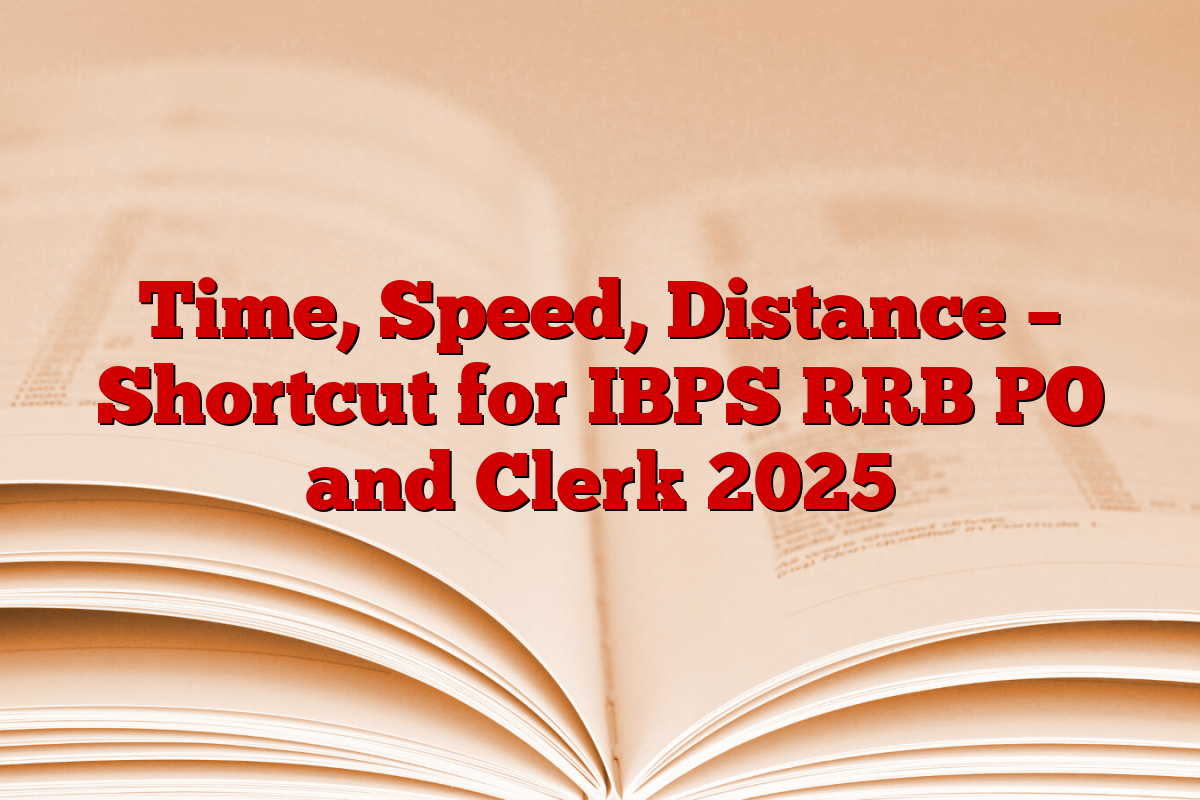Time, speed and distance for IBPS RRB PO and Clerk Examination are an important subject. This involves calculating the relationship between time, speed and distance to solve various problems. These types of questions test your ability to understand basic concepts and implement them quickly under examination pressure. Using shortcuts can help save time and increase accuracy. In this article, we will discuss some effective shortcuts and strategies that can help you solve time, speed and distance problems for IBPS RRB exams rapidly and more efficiently.
Time, Speed, Distance – Shortcut for IBPS RRB PO and Clerk 2025
Mastery in shortcuts for time, speed and distance problems can greatly improve your speed and accuracy IBPS RRB Examination By identifying normal patterns and applying formulas quickly, you can easily solve these questions within the given time. Let us find out some useful shortcuts that can help you deal with these problems more efficiently:
Speed = distance/time: This original formula can be arranged again to find any unknown variable. If you know two of the three values (speed, distance, or time), you can easily calculate the third.
Relative motion: When two items are moving towards each other, their relative speed is the sum of their personal speed. If they are moving in the same direction, reduce their speed.
Motion conversion: To convert the speed from km/hR to M/s, multiply from 5/18. To convert M/s to KM/HR, multiply from 18/5.
SHortcuts for some problems: If two people or vehicles start with two points and move towards each other, the time taken to meet is given by the formula – time = distance / (sum of their speed) between them.
IBPS RRB PO and Clerk Time, Speed, Distance Questions for 2025
Below IBPS RRB PO and Clerk Exams have some questions from the subject of time, speed and distance. Practicing these types of questions will help you understand the pattern and apply the shortcut easily. Try to solve them within a limited time to improve your speed and accuracy.
Q1. A boat can cover 120 km below in 2.5 hours, and the speed of the boat and the speed of the stream in the ratio of 7: 5. If the boat may cover the D -24 km upwards in 7.5 hours, the time taken by the boat still search to cover the D km in the water.
(a) 6 hours
(b) 5 hours
(c) 4 hours
(d) 2 hours
(e) 3 hours
Q2. The time taken by train Q to cross the 120 meter-Lumb platform is 3 seconds less than the time taken by Train P to cross the same platform. If the ratio of speed of trains is 3: 2 respectively, then find out the speed of the train.
(A) 24 meters/second
(b) 15 meters/second
(c) 12 m/second
(d) None of these
(E) cannot be determined
Q3. A boat traveled 3x/5 km in downstream and 2x/5 km upwards. The speed of the boat is still 12 km/h and the speed of the stream is 8 km/h and the time taken by the boat to cover the distance given by the boat is 14 hours more than the time taken by the boat to cover the distance downwards. Find out the total distance traveled in downstream?
(A) 220 km
(b) 155 km
(c) 182 km
(d) 70 km
(E) 120 km
Q4. The 200 meter long train can cross a pole in A8 seconds, and the train B can cross the 150 meter long platform in 25 seconds. The difference between the length of A and B is 150 meters (the length of the train length B> Train A length). Find the time taken by train to cross each other while running in the opposite direction.
(A) 135/11 seconds
(b) 119/12 seconds
(c) 111/16 seconds
(d) 120/7 seconds
(e) 110/9 seconds
Q5. The time taken by a boat to cover D km downstream is 4 hours more than the time taken by the boat to cover D-116 km upwards. The ratio of boat speed in water is still 9: 2 respectively for the speed of the present. If the time is taken by the boat to cover 176 km down in 8 hours, find the time taken by the boat to cover D-60 km upwards.
(a) 6.5 hours
(b) 8 hours
(c) 7.5 hours
(d) 8.4 hours
(e) 4 hours
